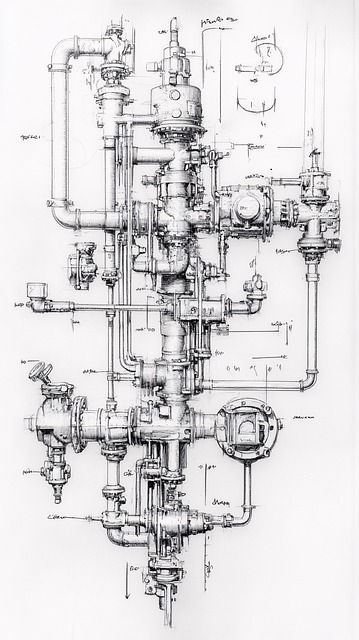Understanding foundation types is vital in structural CAD drafting for building stability. Different foundations transfer loads based on soil conditions and building design. Shallow, deep, and slab foundations handle specific load scenarios and geotechnical challenges. Precise CAD models, incorporating soil data, load calculations, and building codes, ensure robust designs meeting safety standards for long-term structural integrity.
“Foundation and footing plans are critical components ensuring structural integrity, stability, and longevity of any construction project. This article delves into the intricacies of these essential elements, guiding you through various aspects from understanding foundation types to designing robust footing plans. We explore the art of structural CAD drafting—its techniques and best practices—as well as the seamless integration of foundations and footings for optimal performance. Essential reading for engineers, architects, and construction professionals.”
Understanding Foundation Types and Their Roles
Understanding the different types of foundations and their roles is paramount in ensuring structural integrity, especially in structural CAD drafting. Foundations serve as the critical interface between a building and the earth, transferring loads from the structure to the ground below. There are several primary foundation types, each suited for specific geotechnical conditions and building designs. For instance, shallow foundations are commonly used for smaller structures in areas with strong, compact soils, while deep foundations are necessary for taller buildings or those constructed on weak or unstable soil.
In structural CAD drafting, engineers must consider factors like soil bearing capacity, water table depth, and potential settlement to select the most appropriate foundation type. For example, a slab foundation is suitable for uniform load distribution over a large area, while a pile foundation provides increased capacity for uneven loads or sites with poor soil conditions. This knowledge allows engineers to create robust designs that guarantee the longevity and stability of buildings, ensuring safety and structural integrity for years to come.
Key Factors in Designing Footing Plans
When designing footing plans for a structure, several critical factors must be considered to ensure stability and structural integrity. These include the type of soil and its bearing capacity, as softer soils may require deeper footings. Understanding the load calculations is paramount; this involves assessing the building’s weight, live loads (from occupants and equipment), and dead loads (permanent fixtures). Using advanced structural CAD drafting software, engineers can model these factors to create optimized footing plans.
The specific structural design, including the building’s size, shape, and orientation, plays a significant role in determining the footprint and depth of footings. Local building codes and regulations must be adhered to, ensuring compliance with safety standards. By integrating these considerations into the drafting process, engineers can create robust foundation systems that support the structure for years to come.
Structural CAD Drafting: Techniques and Best Practices
Structural CAD drafting is a critical process that involves creating precise digital blueprints for buildings and structures, ensuring their stability and durability from conception to construction. It requires meticulous attention to detail as even the smallest error can have significant implications on structural integrity. Professional engineers and architects utilize advanced software to produce detailed drawings, employing techniques such as 3D modeling, which offers a comprehensive visual representation of the design.
Best practices in structural CAD drafting include ensuring dimensions are accurate and consistent, applying industry-standard symbols and conventions, and incorporating relevant load calculations. Regular quality checks and peer reviews help identify and rectify mistakes early on. Additionally, utilizing cloud-based platforms enables collaboration among team members, facilitating efficient updates and changes to the design.
Ensuring Stability: Integration of Foundation and Footings
The stability and longevity of any structure heavily rely on the robust integration of its foundation and footing plans. In structural CAD drafting, this synergy is crucial for ensuring the building remains securely anchored to the ground, withstanding external forces like wind, earthquakes, and heavy loads. Foundation type (such as slab, shallow, or deep foundations) and footing design (including footings, mats, or piles) must be carefully considered and meticulously detailed to distribute weight evenly and prevent settlement or shifting.
A well-designed foundation and footing system creates a stable base, acting as the structural backbone of the building. This integration involves precise calculations, considering soil conditions, load capacities, and spanning distances to create a safe and efficient structure. By leveraging advanced CAD software, engineers can model and analyze these intricate components, optimizing designs for both strength and economic material use.
In ensuring structural integrity, a robust foundation and meticulously designed footing plans are paramount. By understanding various foundation types and their roles, incorporating key design factors, and leveraging advanced techniques in structural CAD drafting, engineers can create stable and durable structures. These integrated solutions not only guarantee the longevity of buildings but also optimize construction processes, making structural CAD drafting an indispensable tool for achieving superior architectural outcomes.
